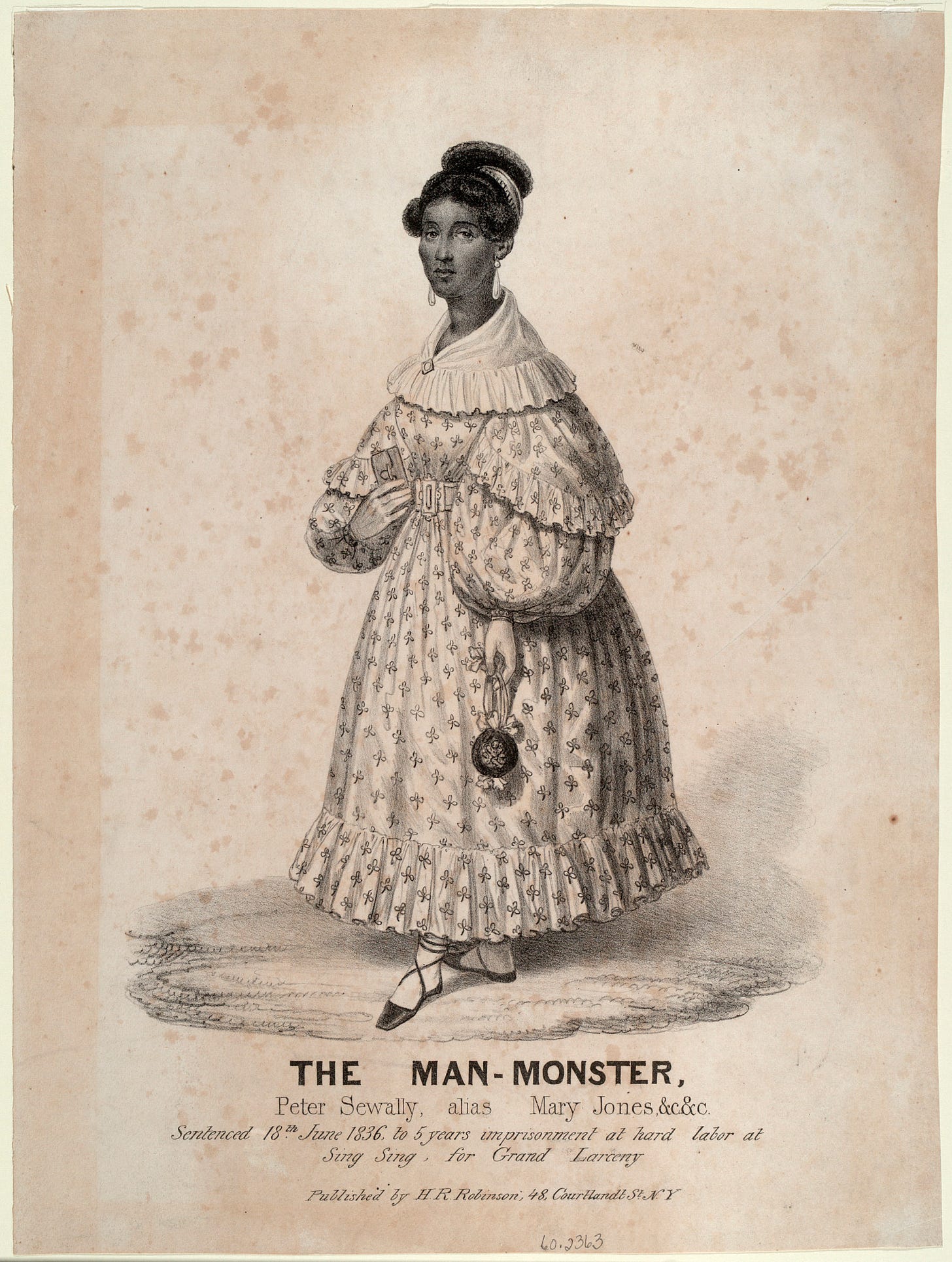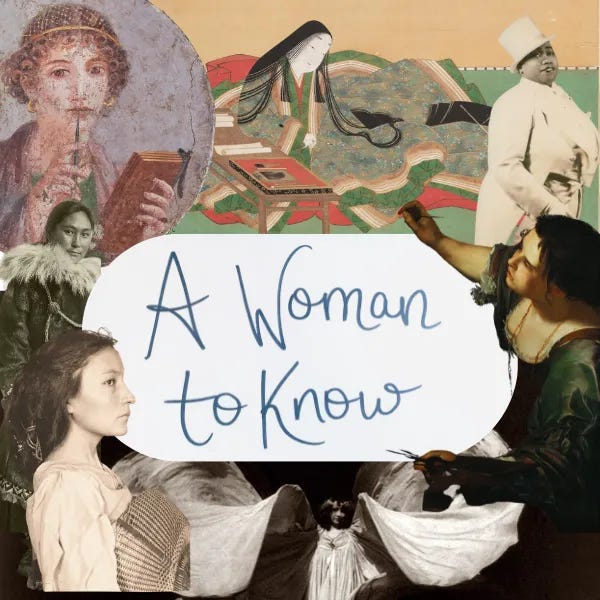
Not much is known about Mary Jones before the date that would change her life: June 15, 1836.1
Mary survived as a pickpocket, sex worker and maid to “girls of ill fame.” She grew up in New Orleans and moved to New York some time in her 20s, where she lived and worked in various Manhattan brothels.
Mary later said she’d always been in the habit of wearing women’s clothes:
I have been in the practice of waiting upon Girls of ill fame and made up their Beds and received the Company at the door and received the money for Rooms and they induced me to dress in Women's Clothes, saying I looked so much better in them and I have always attended parties among the people of my own Colour dressed in this way—and in New Orleans I always dressed in this way.
But she finally got in trouble for it — serious trouble — when she took to working alongside her friends.
A spectacular piece from R.L. Kinsey reflects on Mary’s friendships:
Could this community of accepting people—fellow outsiders of various kinds—be how Mary survived despite so much negative attention, and thus why she chose not to seek an easier—albeit perhaps less fulfilling—life elsewhere? If Mary did think of herself as something other than male, was this view shared by those in her circle? How might their own status as outsiders have impacted their acceptance of Mary and her identity?
Keep reading with a 7-day free trial
Subscribe to A Woman to Know to keep reading this post and get 7 days of free access to the full post archives.





